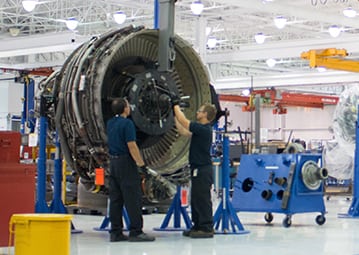Global Avionics Round-Up from Aircraft Value News (AVN)

While the aerospace media obsesses over next-gen aircraft and futuristic air taxis, a far more immediate story is quietly unfolding in hangars and Maintenance, Repair and Overhaul (MRO) facilities around the world.
Avionics retrofitting, the art of upgrading existing aircraft with modern electronic systems, has become a booming global business, driven by sustainability mandates, regulatory compliance, and operational efficiency.
Many of the world’s most active aircraft aren’t the latest jets rolling off assembly lines, but aging workhorses with plenty of life left in their airframes. From the Boeing 737 classics to ATR turboprops and regional jets, thousands of aircraft are flying with outdated systems. Rather than replace them, operators are increasingly investing in avionics retrofits that breathe new life into old metal.
One major catalyst is regulatory pressure. Requirements like ADS-B Out in the United States, and similar mandates in Europe and Asia, have forced operators to upgrade transponders and surveillance systems. ADS-B Out enables aircraft to broadcast their position, altitude, speed, and other data to air traffic controllers and other aircraft.
Compliance with these requirements is only the beginning. Airlines and cargo carriers are using the opportunity to install glass cockpits, synthetic vision systems, and modern communications tech.
These upgrades are no longer seen as optional; they’re essential for:
- Fuel Efficiency: Modern avionics allow better flight path optimization and engine performance monitoring.
- Noise and Emission Compliance: Environmental regulations are pushing older aircraft to adapt or be grounded.
- Operational Integration: Enhanced avionics make legacy aircraft more compatible with modern fleets and ATC systems.
The retrofit wave is especially strong in emerging markets. In Latin America, Africa, and Southeast Asia, where capital constraints limit new aircraft purchases, upgrading existing fleets offers a cost-effective path to modernization. MRO hubs in Singapore, Dubai, and Miami are capitalizing on this demand with turnkey retrofit packages.
Avionics manufacturers are responding with tailored solutions. Companies including Garmin, Honeywell, and Universal Avionics are producing modular retrofit kits that can be installed quickly, with minimal downtime. Some even offer financing packages to ease the upfront burden.
What’s more, this trend aligns with the aviation sector’s growing sustainability push. Extending the operational life of existing aircraft through digital modernization reduces the need for resource-intensive manufacturing and avoids adding to the global aircraft backlog.
The media may remain fixated on what’s new, but smart operators understand the value of what they already own. In a carbon-conscious, cost-sensitive world, retrofits aren’t just a stopgap—they’re a strategy. By leveraging retrofits, aging aircraft can enjoy sustained base values and lease rates.
This article also appeared in our partner publication, Aircraft Value News.
John Persinos is the editor-in-chief of Aircraft Value News. You can reach him at: jpersinos@acccessintel.com